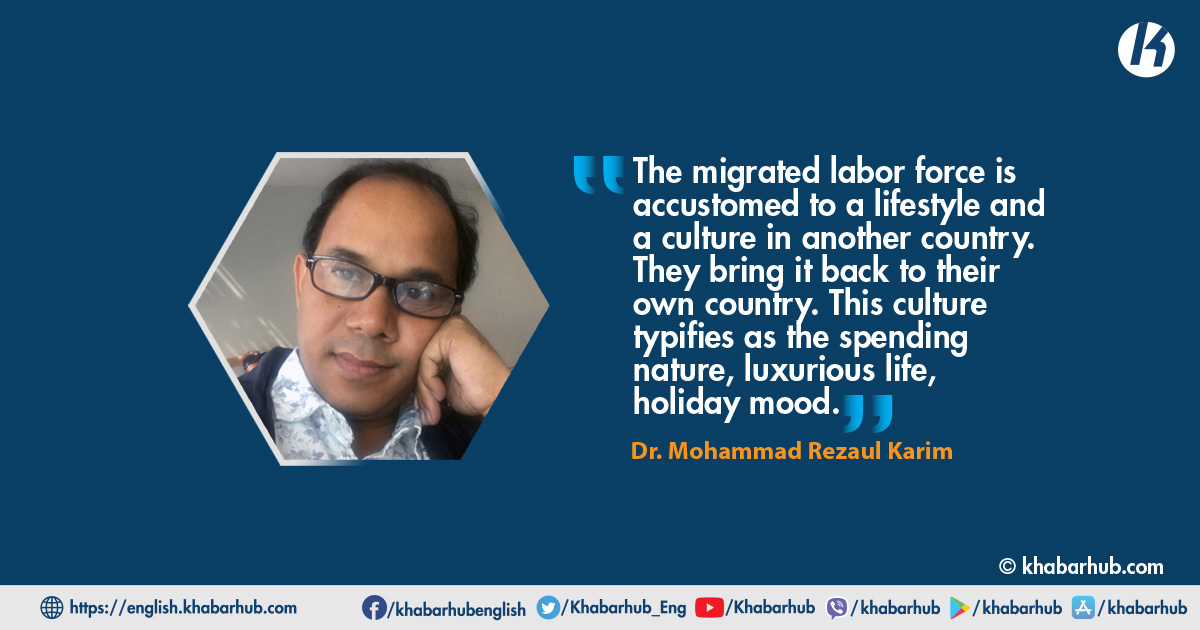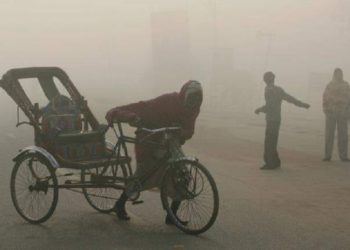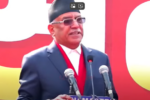Critical junctures of faster economic growth, mammoth activities for achieving developed nation vision, radical transformation of the socio-cultural array, the peak of the demographic dividend that necessarily dictates holistic and comprehensive policy initiatives with SMART (specific, measurable, attainable, realistic & time-bound) action plans to undertake.
The key driving force for the development miracle of Bangladesh is the demographic dividend that equals 65% of the total population.
This fraternity is comprised of a young active workforce that continuously contributes to economic activities either in the public or private sector. It is noticeable that the private sector employs most of the workforce while the public sector has limited scope.
Although the country’s economy is huge, the impossibilities of engaging the total active workforce within the country either in the public or private sector are widely acceptable.
The total situation, whether the society is responsible for or the country, forcefully dictates and designs the young group to find out the way of earning for their livelihood.
Finding no other best alternative for utilizing their potentials, they opt for working abroad as migrated labor in the Middle East, Malaysia, or South Africa, on one hand.
On the other hand, highly educated and skilled young people move to the European countries, US, Canada or Australia.
Apart from these groups, a mediocre group uses a different route to reach Europe via a third country. This group sometimes takes the risk of the dangerous route.
Whatever the destination is, the young fraternity moves out of the country and contributes to other country’s economy by pumping money.
As it is noticed that the first group consists of about 13 million and as inept labor, they mandatorily come back to Bangladesh after a certain period spending over there, particularly at their old age when they can not be engaged in economic activities.
Bangladesh is progressively showing success in terms of higher life expectancy because of various initiatives of the government, which means the aging population is increasing with a possibility to intensify this problem.
Is it called life that spending the whole life and youth in another country and just to live or wait for death in own country?
Moreover, Bangladesh is not ready for transforming this huge young generation into a highly skilled and knowledgeable labor force because of the structural and policy snags.
The contribution of the young active force helps transform the country economically, socially and culturally.
The migrated labor force is accustomed to a lifestyle and a culture in another country. They bring it back to their own country.
This culture typifies as the spending nature, luxurious life, holiday mood. As a result, a new social group emerges.
This creates the social transformation that hits the traditional culture ultimately wreaking social harmony. Social alienation is also visibly found as this new group builds new houses in separate places using the agricultural land and indulges within the own non-functional boundary.
Economic transformation amplifies the lifestyle in a way of consuming modern amenities and utilizing their money for individual reputation, which may create a new section of the society.
This new society developed newly based on the suddenly received money may capture and reign the rural society but they are not originally contributors of inculcating the traditional norms of the society.
Economic transformation widens the inequality and creates rich people richer. It also squeezes the middle class who actually instills the values of the society that the country basically helps pivot on to sustainably progress.
The more the middle class is stronger, the more sustainable is the development of the country. Moreover, the less gap between the rich and poor widening the middle-income group people is, the stronger is the development as seen in the Scandinavian countries.
The social structure should be set in such a way the community will be more aging people-friendly, supports including health and leisure are adequate, source of income is uninterrupted.
Sending a huge illiterate inept group of young people to other countries raises a serious question of how far it is apposite as they are not the inculcator of the higher-level cultural orientation of the country rather they permeate the notion of lower-level social development of the society.
It is time to ruminate what we achieve as the image in comparison with the economic value. Because of the knowledge gap of this group and government initiatives for their forceful savings, this group has savings, which is insignificant to lead aged life.
Once the active group grows with moderately sufficient wealth or little, there is a possibility to transform into a burden to the country.
Because after coming back to Bangladesh, they neither can engage in any economic activity nor use their skill. This situation keeps them idle and inactive.
Bangladesh envisions becoming a developed nation by 2041. By the time the country will achieve this status based on the enumerated resources generated and contributed by the demographic dividend, they will turn into the aging population with the requirement of necessary social safety net facilities including healthcare.
The coronavirus pandemic has already shown our limitations in handling the health sector and will intensify the problem in 2041 too.
In addition, the health sector is fully dominated by the private sector based on the city area, which means there is little scope of getting service by the poor people including the rural poor.
Further, the pandemic hit every sector where the social issues have spiraling effects with a faster severity in comparison with the economic growth.
It is a pertinent question whether the country is ready to provide a better life to those who will transform into the vulnerable group having a great contribution to the overall socio-economic development of the country.
There is no scope of maintaining trade-off on emphasizing activities between economic and social growth, rather these two areas must be planned together to translate better impact in the society.
Economic development of the country is seen to move so faster where the social issues are not being parallelly taken care of, which indicates the emphasis of development area is not equally taken that poses a threat to sustainable development.
Being in the transformation process of development, Bangladesh still needs several activities in terms of social development.
The young group has already adopted a two-child policy, even one in some cases, and the tendency of migration is increasing which may create of leaving parents alone. There is little chance of being taken care of by the state like developed countries.
Bangladesh is progressively showing success in terms of higher life expectancy because of various initiatives of the government, which means the aging population is increasing with a possibility to intensify this problem.
However, adopting initiatives lacks the faster speed that needs to categorically address the situation. Moreover, after 2050, the birth rate is thought to be decreasing that will deepen the crisis of aging people.
Against this backdrop, a comprehensive plan is needed to tackle the problem. It is quite evident that the demographic dividend will convert to burden at one point in the years to come that necessarily demands to address now to tackle the future problem and continue the development process sustainably.
There is no scope of maintaining trade-off on emphasizing activities between economic and social growth, rather these two areas must be planned together to translate better impact in the society.
(The author is a faculty member of Bangladesh Public Administration Training Centre-the apex-training institute for civil servants, Savar, Dhaka)









Comment